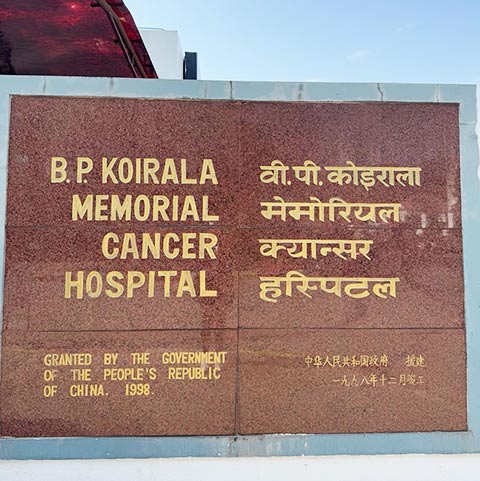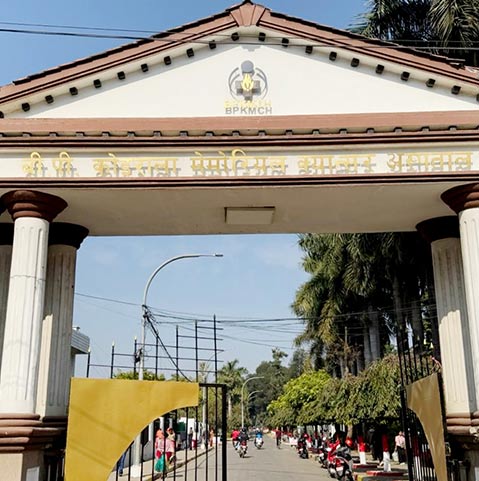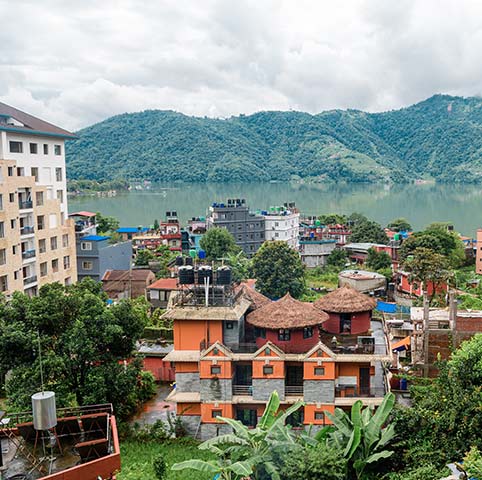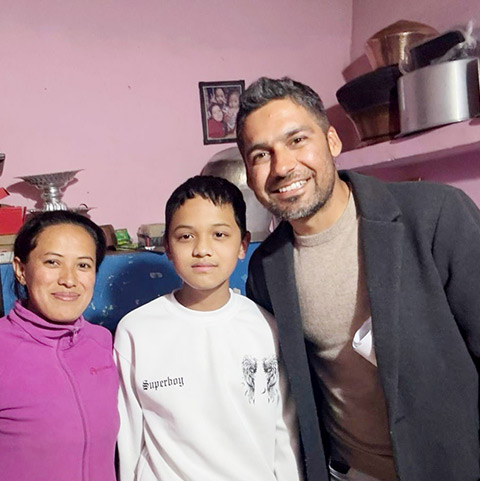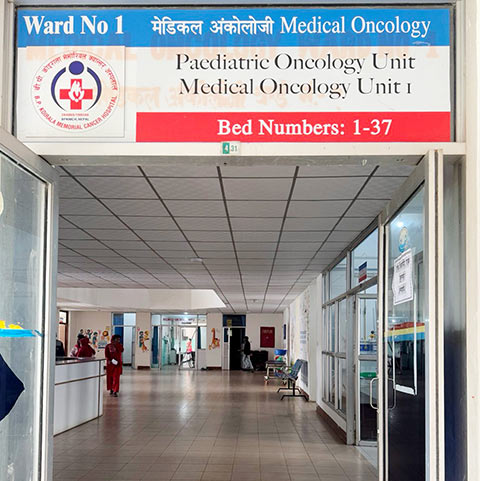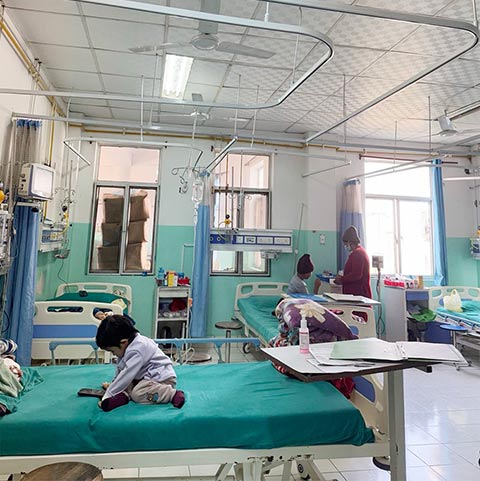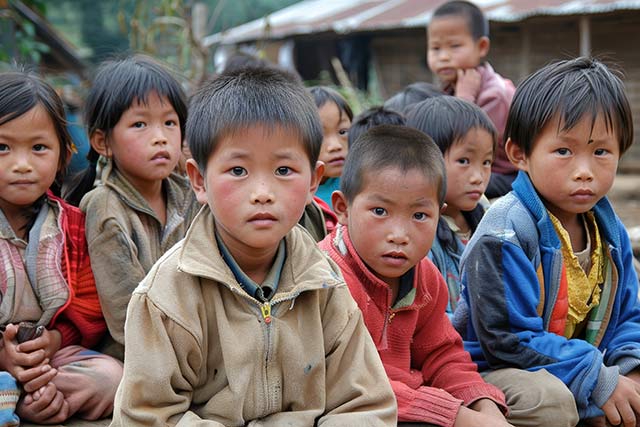DECAN-Child is a research project coordinated by the International Agency for Research on Cancer (IARC). This prospective cohort study is following up 181 children with cancer and their caregivers registered at B.P. Koirala Memorial Cancer Hospital, Nepal’s largest public cancer hospital, which is located 140 kilometres southwest of Kathmandu.
Three years ago, 35-year-old Hira Devi Gurung, a homemaker in central Nepal, experienced every mother’s worst nightmare. She took her 9-year-old son to the doctor for what she believed were harmless leg pains, only to be told that he had cancer and required urgent treatment.
That day marked the beginning of a painful journey, fraught with challenges, which she has chosen to share in the hope of helping others in the future. Hira and her son, Prince, are both part of a cancer research project coordinated by the International Agency for Research on Cancer (IARC), the cancer agency of the World Health Organization (WHO).
Launched in June 2022, the DECAN-Child project aims to identify delays and gaps in the cancer care pathway and assess the quality of care and survival rates of paediatric patients with cancer in Nepal.
In their home in Pokhara, Nepal’s second-largest city, Hira and Prince welcome Dr Deependra Singh, a Nepalese researcher who works at IARC and coordinates the project. Their interviews are being collected as part of a prospective cohort study, which is following up 181 children with cancer and their caregivers registered at B.P. Koirala Memorial Cancer Hospital, Nepal’s largest public cancer hospital, which is located 140 kilometres southwest of Kathmandu.
A difficult path through childhood cancer care
“When my son was diagnosed with osteosarcoma, a type of bone cancer, I was terrified. At the time, I didn’t even know that children could get cancer. I constantly worried, fearing that my son would not survive,” Hira recalls.
The doctor explained the treatment plan, which included chemotherapy and surgery, and Prince was promptly referred to B.P. Koirala Memorial Cancer Hospital, one of the few hospitals in Nepal that provides comprehensive cancer care, including prevention, diagnosis, curative, and palliative services. The hospital, which treats about 5000 new cancer patients annually, has a 30-bed paediatric ward.
Although treatment began without delay, what followed was extremely challenging for both mother and son. “We faced numerous issues at the hospital: delayed reports, long queues to collect them, and daily blood tests. At times, his blood count was too low, causing further delays in treatment,” explains Hira.
Prince’s condition deteriorated. He underwent chemotherapy before and after surgery, and suffered severe side-effects. “His weight dropped drastically, from 24 kg to 18 kg. He lost his hair, vomited blood, and suffered from severe headaches and pain, especially at night. Seeing him in such a state was heart-breaking,” Hira remembers.
Hira’s relatives were supportive, but the financial burden added another layer of distress for their modest family. Because the hospital was far away, the family left their home in Pokhara and moved to Chitwan for six months to stay close to Prince’s treatment centre. As his condition worsened, he had to be admitted to the emergency room on several occasions.
“During diagnosis and treatment, my entire life revolved around my child. I spent all my time feeding, cleaning, and comforting him,” says Hira. “My husband, who worked as a security guard, left his job for three months to help care for Prince. Managing daily expenses and travelling on poor roads for treatment was incredibly difficult. We had no health insurance and had to cover all the medical expenses ourselves, which placed us under severe financial strain.”
Gaps in childhood cancer care in Nepal
Each year, between 1200 and 1600 new cases of childhood cancer are diagnosed in Nepal. While the number of new cases is rising, survival rates remain alarmingly low: only 20–30%, compared with more than 80% in high-income countries.
“Financial constraints are a major hurdle, forcing many families to abandon treatment, because most expenses are paid out-of-pocket with minimal government support,” explains Dr Singh. “But financial barriers are just one part of the problem. Delays in diagnosis, limited access to high-quality care, and gaps in the health-care system also play a significant role in low survival rates. Our study seeks to understand these barriers better.”
The experience of Hira and Prince mirrors those of many other families affected by childhood cancer in Nepal. Their story provides crucial insights into the obstacles faced not only by patients but also by health-care providers and the system itself.
For Hira, the study represents hope that in the future families might not endure the same hardships. “If cancer hospitals were established in every province, with trained specialists and better road infrastructure, many children’s lives could be saved,” she says.
The study’s preliminary findings highlight significant delays in care, with a median time from symptom recognition to treatment initiation of 117 days. “For many patients, this delay extends beyond six months, leading to advanced-stage diagnoses, which drastically reduce the chances of survival,” notes Dr Singh.
Towards a brighter future for childhood cancer care
The final results of the DECAN-Child study are expected in 2025, and Dr Singh hopes that they will help raise awareness among caregivers, health-care providers, and policy-makers and lead to a push for an equitable, affordable cancer care system in Nepal. The findings could help to align Nepal’s efforts with the WHO Global Initiative for Childhood Cancer, which aims to increase the survival rate for childhood cancer globally to at least 60% by 2030.
One promising step forward is the Global Platform for Access to Childhood Cancer Medicines, which is led by WHO in partnership with St. Jude Children’s Research Hospital (USA). This initiative aims to provide cancer medicines at no cost for thousands of children in low- and middle-income countries, including Nepal.

